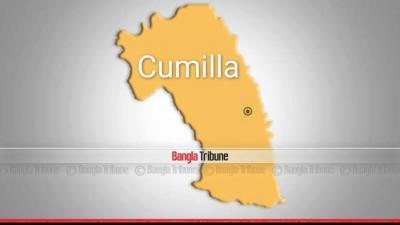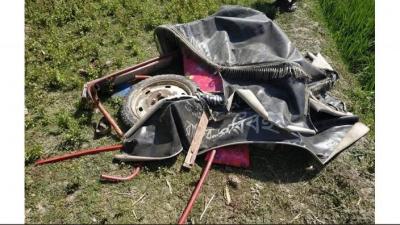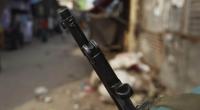 Many Rohingyas living in camps at Cox’s Bazar are going into hiding ever since Bangladesh and Myanmar has agreed to start the repatriation process.
Many Rohingyas living in camps at Cox’s Bazar are going into hiding ever since Bangladesh and Myanmar has agreed to start the repatriation process.
In fact, every time any Bangladeshi or international activists related to the rehabilitation process visits the Cox’s Bazar camps, the refugees flee.
On Oct 30, during the 3rd Bangladesh-Myanmar working group meeting, it was decided that the repatriation process of 2,260 Rohingyas will begin on Nov 15.
However, many of the refugees whose names are on the repatriation list are fleeing elsewhere as they believe that Rakhine is not yet safe for them.
The refugees said that they will go back to Myanmar only if their eight-point demands are met. In January, the Rohingys drew up the demands, which includes Myanmar government publicly announcing that it is giving Rohingyas the long-denied citizenship and inclusion on a list of the country’s recognised ethnic groups.
They further asked that land once occupied by the Rohingyas be returned to them and their homes, mosques and schools rebuilt.
The demands also included that the military be held accountable for alleged killings, looting and rape, and the release of “innocent Rohingyas” picked up in counter-insurgency operations. Also, Myanmar should stop listing people with their photographs as “terrorists” in state media and on government Facebook pages.
It is being said that there is a possibility of repatriating the Hindu Rohingyas as well, although with Nov 15 drawing nearer, there have been no news about how thousands of refugees will be returned to their homeland.
As a result there is still a lot of ambiguity surrounding the whole process.
"Both the land and water gates are ready for the rehabilitation of Rohingyas,” Refugee Relief and Rehabilitation Commissioner Abul Kalam.
He added that both the countries have started the rehabilitation with the refugees’ dignity and safety in mind.
Most of the Rohingyas however fear that they will have a similar fate as the 120,000 Rohingyas who are cooped up in a camp in Rakhine.
“We have no faith on Myanmar. Let them first recognize those living in the Aqiyab camps in Rakhine as citizens. Then we will go back,” said Rohingya leader Amir Hossain.
On the other hand, Rohingya rehabilitation jetties have been set up along the banks of Naf River.
Tin made houses have been lined up along three wooden jetties with toilets. The refugees are to be kept in these 33 houses prior to the repatriations and government officials will supervise them and have been allocated four similar houses.
The decision to for the repatriation in mid November however was met with criticisms from the United States, and several international human rights organizations including the United Nations.
“The US government feels that the rehabilitation process should be safe, respectful and done with consent,” said Richard Albright, Deputy Assistant Secretary, US Bureau of Population, Refugees, and Migration.
The UN Secretary General's Rohingya Crisis Special Envoy Kristin S Bergner, assured that the refugees will not be forced to go back to Myanmar.
She said that the UN is pressuring Myanmar to bring justice to the persecuted Rohingyas.
In November last year, Bangladesh and Myanmar came to a bilateral agreement regarding the rehabilitation of the Rohingyas.
The process was supposed to begin within two months of the agreement but it has been delayed for almost one year.
“The Rohingyas do want to return home. But only when we get our safety and rights as a citizen,” said Teknaf Leda Rohingya Camp Committee Chairman Abdul Matlab.
He added that the Rohingyas will always be grateful to Bangladesh for giving them sanctuary.
 Country
Country
30985 hour(s) 14 minute(s) ago ;
Evening 08:08 ; Monday ; Apr 29, 2024
Rohingyas flee as repatriation day draws near
Send
Abdur Rahman, Teknaf
Published : 07:30, Nov 13, 2018 | Updated : 09:32, Nov 13, 2018
Published : 07:30, Nov 13, 2018 | Updated : 09:32, Nov 13, 2018
0 ...0 ...
/st/zmi/
Topics: Top Stories
- KOICA donates medical supplies to BSMMU
- 5 more flights to take back British nationals to London
- Covid19: Rajarbagh, Mohammadpur worst affected
- Momen joins UN solidarity song over COVID-19 combat
- Covid-19: OIC to hold special meeting
- WFP begins food distribution in Cox’s Bazar
- WFP begins food distribution in Cox’s Bazar
- 290 return home to Australia
- Third charter flight for US citizens to return home
- Dhaka proposes to postpone D8 Summit
Unauthorized use of news, image, information, etc published by Bangla Tribune is punishable by copyright law. Appropriate legal steps will be taken by the management against any person or body that infringes those laws.
Bangla Tribune is one of the most revered online newspapers in Bangladesh, due to its reputation of neutral coverage and incisive analysis.
F R Tower, 8/C Panthapath, Shukrabad, Dhaka-1207 | Phone: 58151324; 58151326, Fax: 58151329 | Mob: 01730794527, 01730794528






